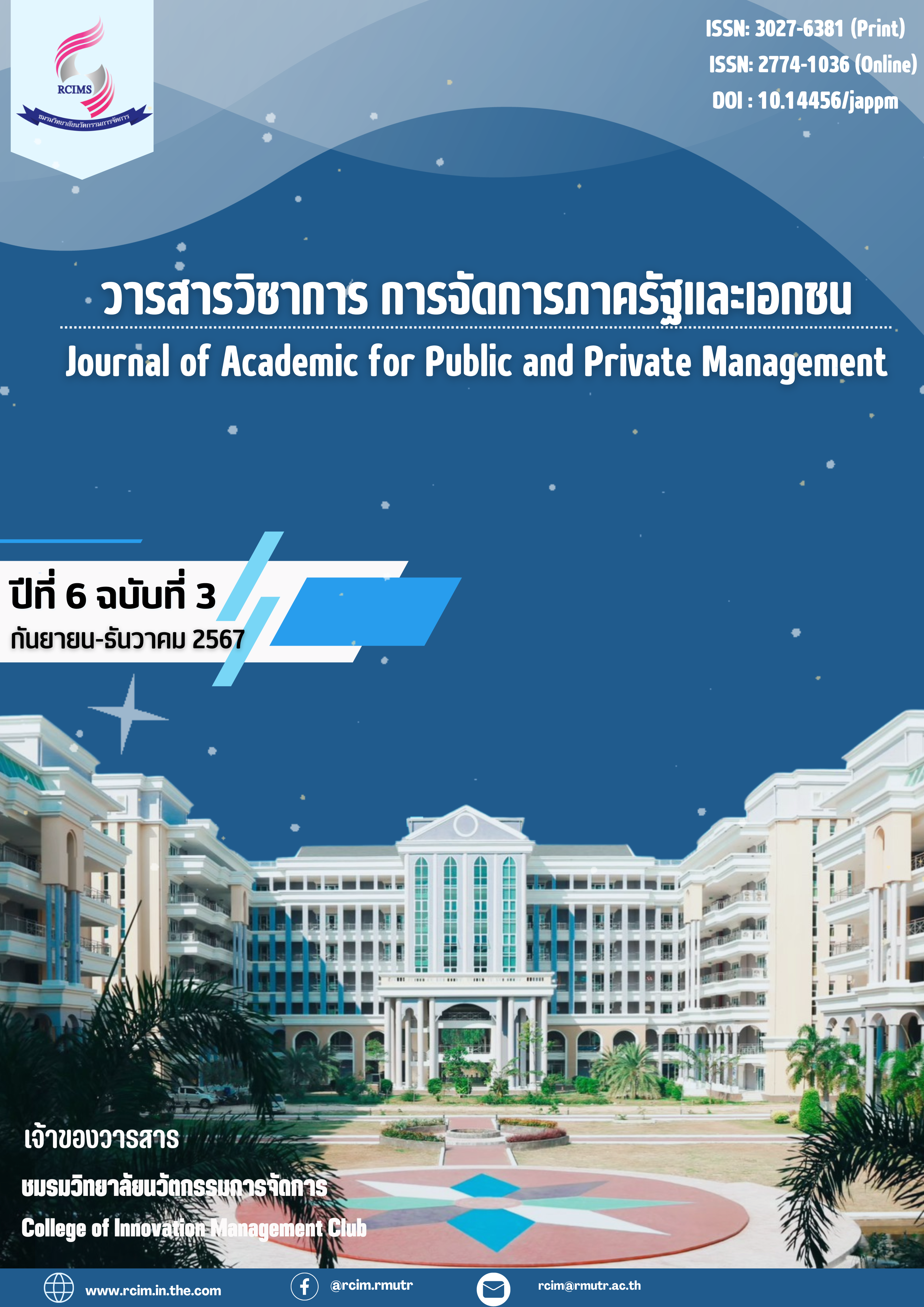Waste Management according to A New Dimension Concept by No Trash Can in Schools under Prachuap Khiri Khan Primary Educational Service Area Office 2
Main Article Content
Abstract
The objectives of this research were (1) to explore the waste management problems in schools, and (2) to compare the waste management according to a new dimension concept by no trash can in schools classified by school size and district. This study employed a quantitative research methodology and used the operational concept according to the waste management policy of Ministry of Education as a conceptual framework. The scope of research was the schools under Prachuap Khiri Khan Primary Educational Service Area Office 2. The sample size determination was according to Krejcie and Morgan’s method. The 273 samples were school administrators and teachers under Prachuap Khiri Khan Primary Educational Service Area Office 2 of the academic year 2022 through simple random sampling. The research data were collected through questionnaires and analyzed with percentage, mean, standard deviation, and analysis of variance. The major findings were as follows:
- On the waste management according to a new dimension concept by no trash can in schools under Prachuap Khiri Khan Primary Educational Service Area Office 2 aspect, it was at the high level.
- On the comparison of the waste management in schools under Prachuap Khiri Khan Primary Educational Service Area Office 2 classified by school size and district aspect, it showed that there was no significant difference for school size factor while there was a significant difference for district factor at the statistical level of .05.
The knowledge from this research is beneficial for school administrators and educational agencies to plan the waste management in schools more efficiently.
Article Details

This work is licensed under a Creative Commons Attribution-NonCommercial-NoDerivatives 4.0 International License.
References
กรมควบคุมมลพิษ. (2564). ข่าวสารสิ่งแวดล้อม. กรุงเทพฯ: กระทรวงทรัพยากรธรรมชาติและ
สิ่งแวดล้อม.
กิตติมา เนตรพุกกณะ. (2563). การพัฒนากระบวนการจัดการขยะของโรงเรียนเกาะพะงันศึกษา อำเภอ
เกาะพะงัน จังหวัดสุราษฎร์ธานี (วิทยานิพนธ์ปริญญาครุศาสตรมหาบัณฑิต). มหาวิทยาลัยราชภัฏ
ภูเก็ต.
จันจิรา ขานพล. (2560). แนวทางการพัฒนาบริหารจัดการขยะในสถานศึกษา (วิทยานิพนธ์ปริญญาครุศา
สตรมหาบัณฑิต). มหาวิทยาลัยเชียงใหม่.
ธนาธร จูงวงษ์สุข. (2562). การบริหารจัดการขยะตามแนวทางมิติใหม่ไร้ถังของโรงเรียนในสังกัดสำนักงาน
เขตพื้นที่การศึกษาประถมศึกษาเชียงใหม่ เขต 3 (วิทยานิพนธ์ปริญญาครุศาสตรมหาบัณฑิต).
มหาวิทยาลัยเชียงใหม่.
ณัฐวุฒิ ผดุงเพียร. (2560). ปัจจัยที่มีผลต่อประสิทธิภาพในการบริหารจัดการขยะ (วิทยานิพนธ์ปริญญา
ศึกษาศาสตรมหาบัณฑิต). มหาวิทยาลัยขอนแก่น.
ปริยวิศว์ วงษ์จันทร์. (2565). การพัฒนารูปแบบการจัดการขยะในสถานศึกษาตามโครงการโรงเรียนปลอด
ขยะ โรงเรียนขลุงรัชดาภิเษก จังหวัดจันทบุรี (วิทยานิพนธ์ปริญญาศึกษาศาสตรมหาบัณฑิต).
มหาวิทยาลัยราชภัฏหมู่บ้านจอมบึง.
ไพบูลย์ โพธิ์สุวรรณ. (2562). แนวคิดมิติใหม่ไร้ถัง. มิติใหม่ชุมชนไทยไร้ถัง. กรุงเทพฯ: ส เจริญ การพิมพ์.
อริศรา สะสม. (2565). S. W. MODEL: การบริหารจัดการขยะแบบมีส่วนร่วม (วิทยานิพนธ์ปริญญาครุศา
สตรมหาบัณฑิต). มหาวิทยาลัยเชียงใหม่.
Krejcie, R. V., & Morgan, D. W. (1970). Determining sample size for research activities. Educational
and Psychological Measurement, 30(3), 607–608.
The U.S. Environmental Protection Agency. (2015). Report on the 2015 U.S. Environmental Protection
Agency (EPA). Washington, DC: U.S. EPA.
Zhiyong, H., Li, J., Zhao, H., Cheng, J., & Liu, Y. (2019). Characteristics and management modes of
domestic waste in rural areas of developing countries: A case study of China. Environmental
Science and Pollution Research International, 26(9), 8485–8501.

